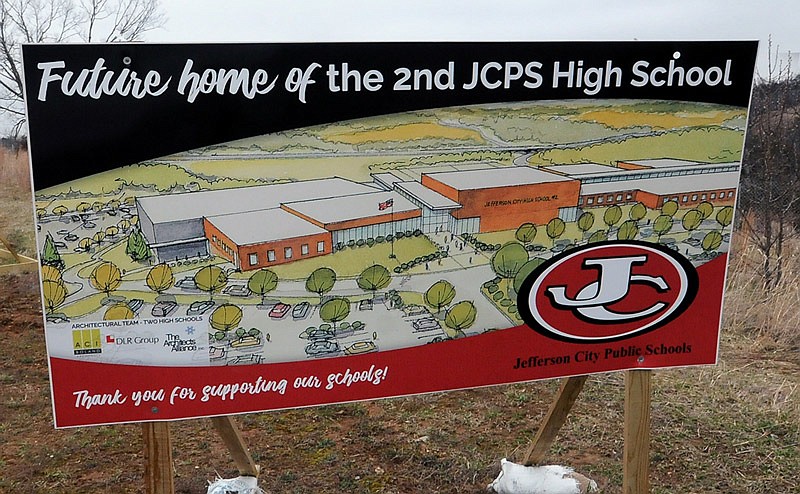Most members of Jefferson City Public Schools' Board of Education voted Tuesday night for a school attendance boundary line change they did not like, but a compromise was put into place that the approved changes will be reviewed soon after they take effect in August 2019.
The newly approved boundary lines, which will send some Cedar Hill Elementary School students to Thomas Jefferson Middle School, are projected to create the following changes at the middle school level next school year:
- TJMS's enrollment would decrease from 1,083 students this year to 1,049. Lewis and Clark Middle School's enrollment would increase from 969 to 1,003.
- The poverty rate at TJMS - measured by the percentage of students who are eligible for free or reduced-price lunch - would decrease from 57.71 percent this year to 56.38 percent. At LCMS, the rate would increase from 62.84 percent to 64.06 percent.
- The percent of racial and ethnic minority students at both schools would become equal at 40.11 percent - about a 1 percent decrease at TJMS and 2 percent increase at LCMS.
The board chose "option B" from three boundary line change options Tuesday - each one intended in a different way to accommodate Capital City High School into the district by adjusting middle school boundary lines to control enrollment and poverty levels at the district's soon to be two high schools:
- Option A: Send 37 students in Cedar Hill's attendance area who also live near CCHS to South Elementary School, where they would then go on to TJMSand then CCHS, instead of LCMS and then Jefferson City High School as their other Cedar Hill peers would.
- Option B: Keep the same 37 students at Cedar Hill for the rest of elementary school, but send them to TJMS.
- Option C: Don't make any changes, except for the one in all three options to send all Thorpe Gordon Elementary School students to LCMS and then JCHS, as opposed to the current split where some Thorpe Gordon students go on to TJMS.
Bobby Showers spoke as a member of the community boundary line committee that had been set up by the district last year and that came up with the three options. He voiced his disagreement at the start of the meeting in open forum against option B, because of the middle school split it creates at Cedar Hill.
When it came time for the board to discuss which option they were going to go with, Treasurer Lorelei Schwartz and then Vice President Rich Aubuchon supported option B.
"I do agree with Bobby Showers; I think South is a very good school, and I think scenario A would be the most ideal, but I don't want to put that kind of pressure on that school," Schwartz said. The board had been told earlier in the meeting that choosing option A could create the possibility that some students at South would have to attend school in a classroom trailer, because the change might put the building of students over its capacity of 340 if all 37 students in the affected area went there.
JCPS Chief of Learning Brian Shindorf said if all 37 students affected in option A went to South, the school's second grade would have 25 students per class, and fifth grade would be at 28 - "that would be the largest second grade and the largest fifth grade in the district," and above the state education department's size recommendations.
The number for second grade would require per the Department of Elementary and Secondary Education's maximum class size rule that a paraprofessional be brought in for classroom assistance.
Board member Scott Hovis said he could not support option A on even the chance of having a classroom trailer at South, given the district passed a tax increase to alleviate high school class size issues.
"I cannot vote for B knowing that we're splitting kids just like what we were not trying to do before with another school," Lindsey Rowden said.
Schwartz pointed out that the people who had come forward from the affected neighborhood to speak to the board said they didn't mind being split.
"I could care less what one neighborhood thinks. I mean really, we're not going to keep everybody happy, but all of the messages that we've been sending people is this togetherness and bringing them together and creating relationships, and keeping families together," Rowden said.
"I believe it's the board's responsibility to do what's best for all kids, not 37 kids. There's not one elementary school that's any better than any other school, and we have to be very careful not to give that message that that's what we believe," Lori Massman said of her hesitancy about option B, something Ken Enloe echoed.
"I would also be supportive of (option) A, were it not for the capacity concerns," especially after just having recently made changes to get students out of a classroom trailer at East Elementary School, board President Steve Bruce said.
However, Bruce wanted to make clear that as a board "we flatly reject the notion that one school is not as good as another, whether it's because of property values or your ability to get a quality education in Jefferson City Public Schools, it does not matter where you live."
Rowden was the only member of the board who ultimately voted against option B, but the majority's approval came with an amendment from Enloe to review the decision in September 2019 once next year's enrollment data is available.
Bruce set a target date of December's board meeting for the board's policy committee to present a recommendation on a more comprehensive boundary line review policy.

